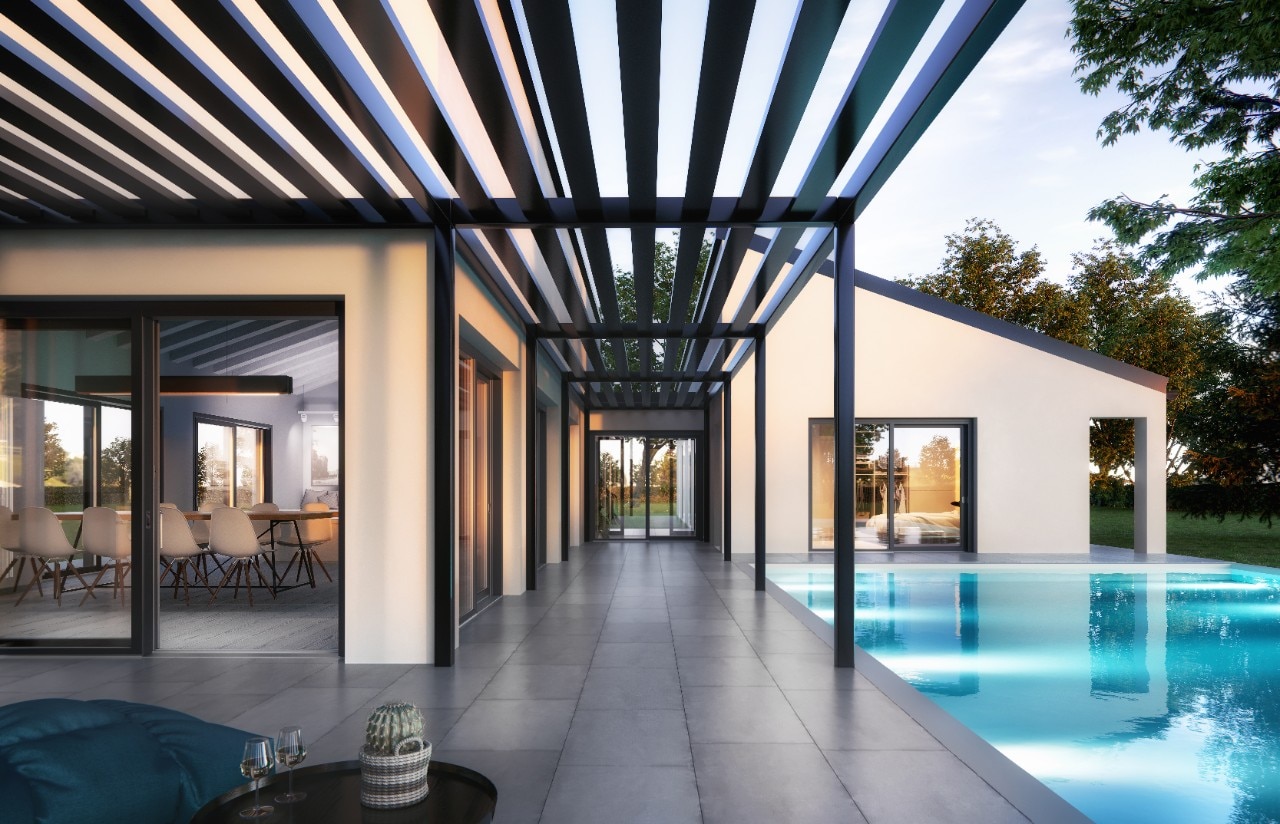The Premio Aurea was presented last April and is an award established by Schüco PWS Italia to promote the best Italian talents from the design world by identifying proposals that involve the use of Schüco's PVC systems. “This project stems from the desire of creating a virtual meeting place where professionals can get even closer to Schüco’s philosophy, grasp its mindset and values in its entirety while drawing inspiration and open a conversation with local entities. Competition is seen as a way to spark creativity,” explains Elena Zagatti Marketing and Communication Director at Schüco PWS Italia. “We believe this to be important because the world of architecture, which is not exclusively made of emblazoned names but also and above all of an entrepreneurial fabric that works hard to rebuild an Italy which is currently made of energy inefficient buildings in need of deep renovations, needs to be promoted and recognized.”
The board of judges is chaired by Carlo Ratto from the architectural firm Carlo Ratti Associati, one of the most prestigious architectural firms, which headquarters in Turin and offices in London and New York. Ratti stresses the sustainable nature of the award, precisely because Schüco is determined to adopt up to 50 per cent of recycled materials in its profiles. “It is about rewarding professionals who share a vision of a future in which technology and sustainability are intertwined with everyone’s daily life. Doors and windows are crucial to the livability conditions just like natural lighting and ventilation, and the energy efficiency of a building.”
The criteria used to evaluate the competing projects are four: lighting, design, innovation, and sustainability. “These are essential parameters in architecture, our design and innovation studio works on them every day,” continues Ratti. “Lighting and design are criteria that refer more properly to the use of windows and doors in the project and its overall aesthetics. Sustainability and innovation are central to our firm’s ethos: all our projects explore a way of combining the two in their design but also with a perspective to the future in order to fight the climate crisis.”
To participate, professionals can simply upload their design on the online portal. After the the board of judges’ evaluation, the three projects with the highest average score will become finalists and take part in the awarding ceremony. But which ones will be the most interesting trends? “One trend I would like to see coming out of this first edition of the Aurea Award is the increasingly growing interest in circularity,” says Ratti. “This means thinking about where the raw materials and components come from, but also thinking about the end of the life of a building, of a component, of an object, taking into consideration how they fit within the productive cycle through reuse and recycling. The award we created with the CRA-Carlo Ratti Associati team was designed starting from a circular concept: a ring in which the materiality of Schüco’s PVC manifests in the four phases of its life cycle, with an eye to constant renovation and reuse. I am sure that architects and professionals will bring to the competition many more themes and innovations with their proposals.”La giuria è presieduta da Carlo Ratti dello studio di architettura Carlo Ratti Associati, uno dei più prestigiosi studi di architettura con sede a Torino e uffici a Londra e New York. Ratti sottolinea la natura sostenibile del riconoscimento, proprio in virtù della determinazione di Schüco di adottare nei propri profili fino al 50% di materiale riciclato. “Si tratta quindi di premiare i professionisti che condividono la visione di un futuro in cui tecnologia e sostenibilità si intrecciano nella vita quotidiana di tutti. L’infisso inoltre determina condizioni di vivibilità cruciali come illuminazione e aerazione naturali, e l’efficienza energetica di un edificio”.
Quattro sono i criteri di valutazione dei progetti in gara: illuminazione, design, innovazione e sostenibilità. “Si tratta di parametri essenziali per l’architettura su cui lavoriamo ogni giorno con il nostro studio di design e innovazione”, prosegue Ratti. “Illuminazione e design sono criteri che si riferiscono più propriamente all’utilizzo dei serramenti nel progetto e nella sua complessiva misura estetica. Sostenibilità e innovazione poi sono centrali all’ethos del nostro studio: tutti i nostri progetti ne esplorano la confluenza, nella progettazione del presente ma anche in un’ottica futura e di contrasto alla crisi climatica”.
Per partecipare è sufficiente caricare il progetto sul portale online e, a seguito della votazione della giuria, i tre progetti che avranno raggiunto la media di punteggio più alta saranno i finalisti e parteciperanno alla serata di premiazione. Ma quali saranno le tendenze più interessanti? “Una tendenza che mi piacerebbe veder emergere dalla prima edizione del premio Aurea è un interesse crescente verso la circolarità”, sottolinea Ratti. “Questo significa pensare alla provenienza dei materiali e dei componenti scelti, ma significa anche pensare alla fine della vita di un edificio, di un componente o di un oggetto, considerando come essi rientrino nel circolo produttivo attraverso il riuso o il riciclo. Il premio stesso che abbiamo realizzato con il team di CRA-Carlo Ratti Associati è stato progettato partendo proprio dal concept della circolarità: un anello in cui si manifesta la materialità del PVC Schüco nelle sue quattro fasi del ciclo di vita, in un'ottica di costante rinnovo e riuso. Sono certo poi che ci saranno molti altri temi e innovazioni che architetti e professionisti porteranno in concorso con le loro proposte”.







